

Picture album

'The Proclamation of South Australia' 1836 records the ceremony at Glenelg, South Australia, on 28 December 1836, according to artist Charles Hill, who painted the scene more than 20 years later.
Location: Art Gallery of South Australia
Related documents
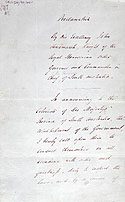
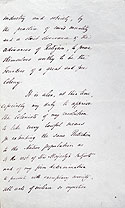
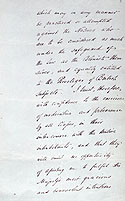
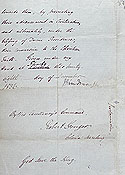
This Proclamation, issued by Governor Hindmarsh and read out by him to the assembled immigrants who had disembarked from the Buffalo at Glenelg in December 1836, notified the settlers that government was in place in the new 'Province of South Australia'. The Proclamation has been read publicly at a ceremony on 28 December each year since.
Location: State Records of South Australia [GRG 24/90/401]

Government House on North Terrace, Adelaide in 1845, painted by Samuel Thomas Gill. The original building remains, with a number of additions accumulated over a century and a half.
Location: Art Gallery of South Australia
Related documents
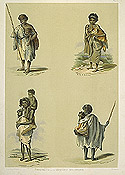
Portraits of Aboriginal people of South Australia, a lithograph by Benjamin Waterhouse Hawkins (from a painting by George Fife Angas), published in South Australia Illustrated in 1846.
Location: Art Gallery of South Australia [Lithograph in the collection - 533G8]
Related documents

'Old and New' Parliament Houses on Adelaide's North Terrace. In 1889 the Assembly moved to the new building and the Council sat in the old Assembly Chamber until 1939, The old building served for a time as a Constitutional Museum for South Australia, but is now occupied as Parliamentary offices.
Location: State Records of South Australia [GRG 35/58/28]
Related documents

'New' Parliament House was built next to the original building in 1889 for the House of Assembly. The first session of the Australasian Constitutional Convention was held here in 1897. The building was completed with the addition of the Legislative Council Chamber in 1939.
Location: State Records of South Australia [GRG 35/58/33]
Related documents

Members of South Australia's Legislative Assembly debate in the House, established in 1856, in this painting by James Shaw c1867. The Legislative Council occupied the Chamber for fifty years after the Assembly moved to the new building in 1889. The Chamber has now been restored to its original appearance.
Location: Art Gallery of South Australia
Related documents
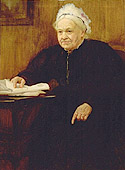
A major figure in the political development of South Australia, Catherine Helen Spence (1825–1910) promoted social and electoral reform, including the proportional voting system. She is shown here in a famous portrait by Margaret Preston.
Location: Art Gallery of South Australia
Related documents
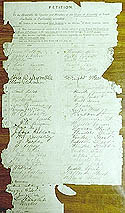
Portion of the massive petition of 11 600 signatures presented to the South Australian Parliament in August 1894, requesting that women in the Colony be granted the right to vote. The petition is now displayed in Parliament House, Adelaide.
Location: Parliament of South Australia
Related documents
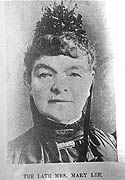
Mary Lee arrived in South Australia in 1879 at the age of 58 and in 1888 helped found the Women's Suffrage League. One of the most famous of South Australia's suffragists, Mary Lee was the chief organiser of the 1894 petition.
Location: History Trust of South Australia [PP 5769]
Related documents
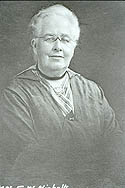
Elizabeth Webb Nicholls was a leader of the Woman's Christian Temperance Union, one of the most prominent organisations in the successful campaigns which made South Australia the first of the Australian colonies to grant women the right to vote in 1894. In 1921 she helped found the Australian Federation of Women Voters which lobbied the new League of Nations on behalf of Australian women.
Location: History Trust of South Australia [PP 4882]
Related documents

The boundaries of South Australia, Western Australia and the Northern Territory divide the lands of the Pitjantjatjara people.
Location: Ara Irititja Archival Project
Related documents

Lawyer Chris Cocks presenting to Ernabella people the South Australia Government's Pitjantjatjara Land Rights Working Party Report at Ernabella, South Australia in August 1978.
Location: Ara Irititja Archival Project [ p14027]
Related documents